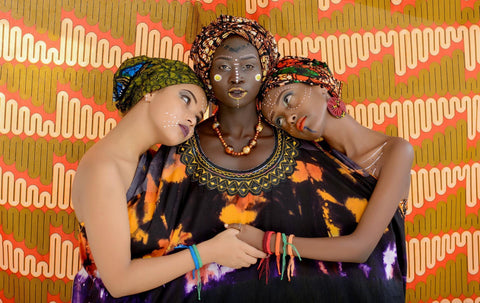
Why do people wear jewelry?
The use of gold and precious stones dates back thousands of years, to ancient cultures such as the Egyptian and Mesopotamian. Since then, jewelry has been a ubiquitous part of human civilization. Adorn yourself with jewelry has been a constant in space and time, in all religions, cultures, classes and genders. Civilizations as disparate as the Aztecs and Tibetans are renowned for their appreciation of turquoise, for example.
In modern day London or New York, a diamond may be coveted for its rarity or an elastic ring paved with dozens of rhinestones perhaps desired due to its onomatopoeic brilliance. It is undeniable that human beings have a need for jewelry, but what exactly is this need?
If we look at Maslow's hierarchy of needs, we see that a pyramid is divided into five rows, from the bottom to the bottom. top: physiological, security, love / belonging, esteem, self-actualization.
We might conjecture that the need for jewelry falls somewhere between social needs and esteem needs. Social needs refer to the need to belong to a group and the needs for esteem belong to the desires for recognition and status.
Jewelry is clearly a must have for medium hair. It is not as essential as physiological well-being, through food, water, or sex, but it is not explicitly part of something as lateral as self-actualization, either. Jewelry acts as an agent of personality. We identify with him. Take birthstones, for example, and how a child born in December may develop a lifelong bond with turquoise for reasons other than the accident of birth.
We become animists with our jewelry; It is not difficult to extract a personality, a soul. The personality of the stone becomes a point of self-identification. If the ruby symbolizes passion, if the amethyst symbolizes sobriety, then we can feel these characteristics affirmed in us by wearing them. And as such we have the reinforcement of self-esteem, of ego.
To become an individual you must stand out from the rest. The rarer the gem we own, the more unique we are. The less frequent the jewel, the more attractive it is to humans. In fact, for a gem to be valuable, it only needs to be perceived as rare.
A good example is diamond, essentially the same as graphite in a pencil, which is not that rare as it is closely regulated by the diamond industry. When it comes to basic displays of wealth, jewelry is something that monarchs, pharaohs, emperors, and empresses could deal with.
An affirmation of their wealth and status. As the standard of living of the average person has improved in many societies, there is less concern for food and shelter, that is, physiological needs, people find themselves, like kings, looking for jewelry as a sign of status. .
But why the jewels? Why do we have an affinity for beautiful stones and metals? For jewelry to be so universally coveted that it must have inherent value. If it is about natural beauty, then the need for jewelry is synonymous with the need for the beauty of nature. Otherwise, why would a laboratory-created diamond, all other things being equal, be less valuable than a natural diamond?
Perhaps it is the need for something different, something superior, the knowledge that aesthetics meet can create regardless of human management and interference. Anthropologists and psychologists have long cited the role of jewelry in the world of dating and mating.
Absent from something like the natural splendor of a peacock, bird, feathers are jewels in themselves, the need for shiny, colorful and splendid stones and metals is a necessity for human beings.
There's a painfully funny scene in Ricky Gervais' Christmas special and award-winning British comedy The Office of Stephen Merchant, where David Brent de Gervais is blindly dating a lady who wears an elegant bee ornament pendant across her chest. A moment in the quote, Brent offers the following terrible Freudian reflection: 'Oh, who wears the necklace to draw attention to her breasts from hers.
The earrings draw attention to her erogenous lobes, the navel towards the naval, the pedantic towards her chest. Rather, the wedding ring can, and should, serve as a barrier to the loving alien, a warning that the wearer is already 'speaking'.
Jewelry therefore speaks and implies in a way persuasive things that would be impolite or rude to communicate with words.

Comments (0)
There are no comments for this article. Be the first one to leave a message!